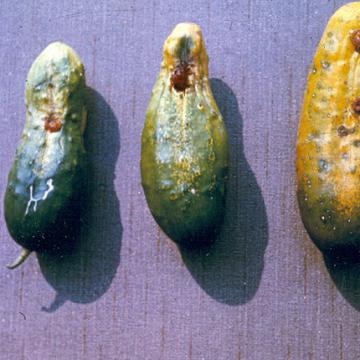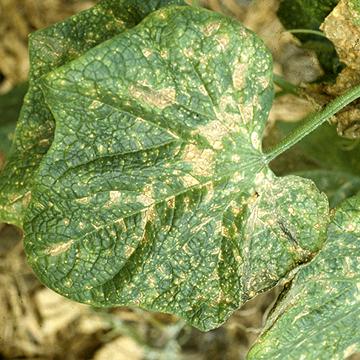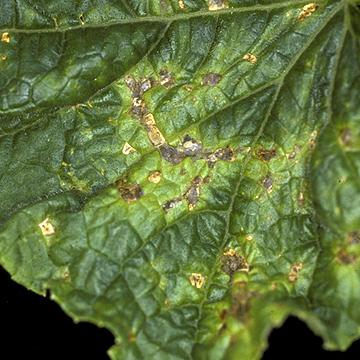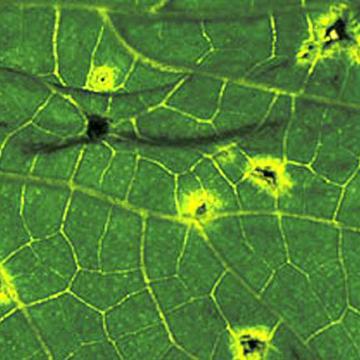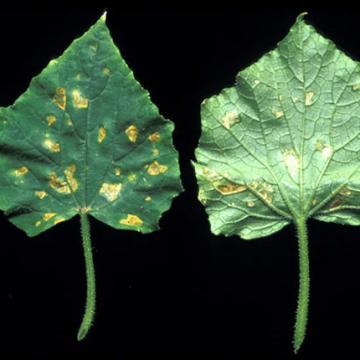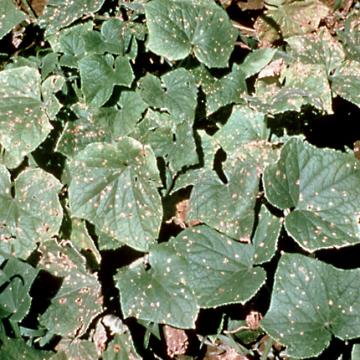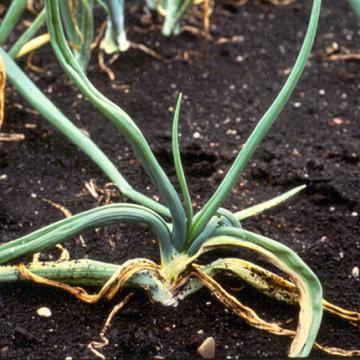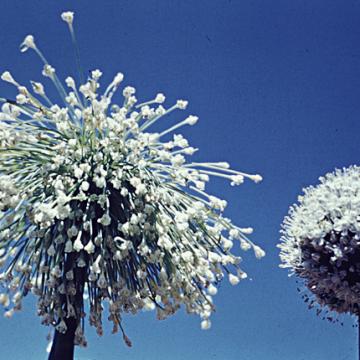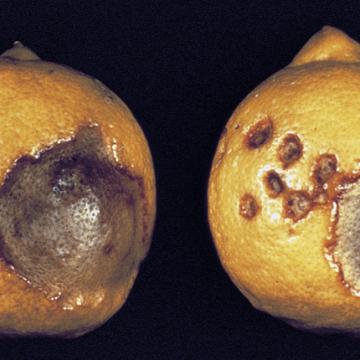DISEASE: Angular leaf spot
HOST: Cucumber
Yellowish diseased cucumbers with bacterial ooze.
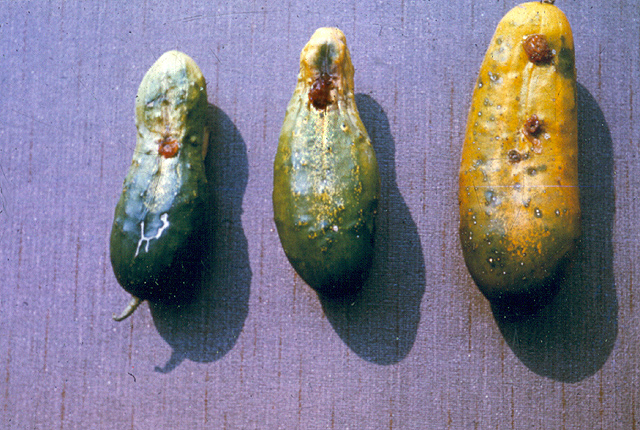
Angular leaf spot | Cucumber
DISEASE: Angular leaf spot
HOST: Cucumber (Cucumis sativus)
PATHOGEN: Pseudomonas syringae pv. lachrymans
SOURCE: B. Jacobsen, M. Shurtleff
DISEASE: Angular leaf spot
HOST: Cucumber
Cucumber leaves with angular, tan lesions of various sizes.
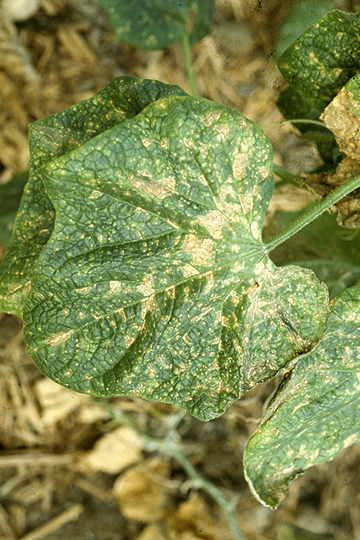
Angular leaf spot | Cucumber
DISEASE: Angular leaf spot
HOST: Cucumber (Cucumis sativus)
PATHOGEN: Pseudomonas syringae pv. lachrymans
SOURCE: M. Goto
DISEASE: Angular leaf spot
HOST: Cucumber
Cucumber leaf with water-soaked lesions. Lesions extend until they meet a secondary vein, resulting in angular appearance.
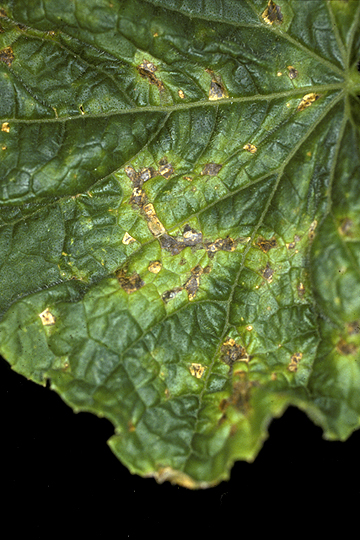
Angular leaf spot | Cucumber
DISEASE: Angular leaf spot
HOST: Cucumber (Cucumis sativus)
PATHOGEN: Pseudomonas syringae pv. lachrymans
SOURCE: S. Thomson
DISEASE: Angular leaf spot
HOST: Cucumber
Cucumber leaf with dark lesions surrounded by halos, another common symptom.
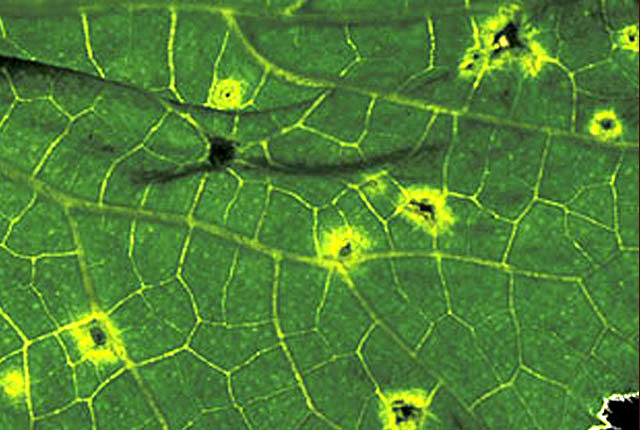
Angular leaf spot | Cucumber
DISEASE: Angular leaf spot
HOST: Cucumber (Cucumis sativus)
PATHOGEN: Pseudomonas syringae pv. lachrymans
SOURCE: J. Young
DISEASE: Angular leaf spot
HOST: Cucumber
Leaves with yellowish, angular spots.
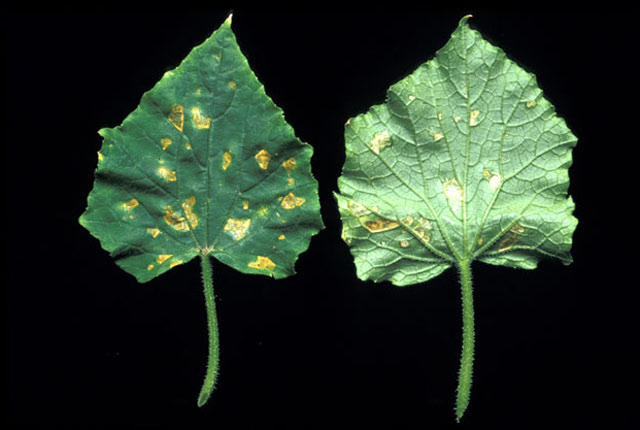
Angular leaf spot | Cucumber
DISEASE: Angular leaf spot
HOST: Cucumber (Cucumis sativus)
PATHOGEN: Pseudomonas syringae pv. lachrymans
SOURCE: J. Young
DISEASE: Angular leaf spot
HOST: Cucumber
Angular necrotic spots delimited by leaf veins.
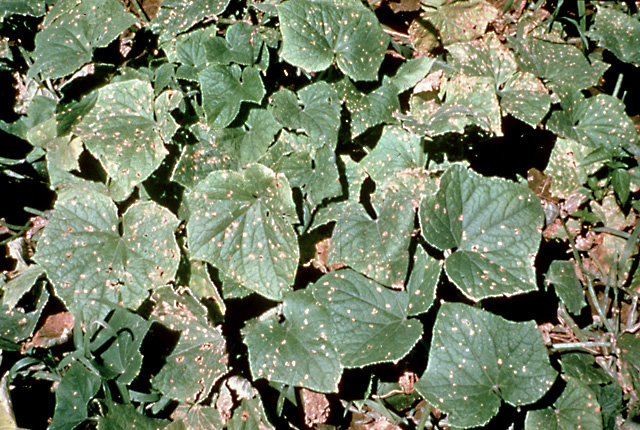
Angular leaf spot | Cucumber
DISEASE: Angular leaf spot
HOST: Cucumber (Cucumis sativus)
PATHOGEN: Pseudomonas syringae pv. lachrymans
SOURCE: N. Tisserat, L. Claflin
DISEASE: Aster yellows
HOST: Onion
Infected plants with yellowish, malformed leaves.
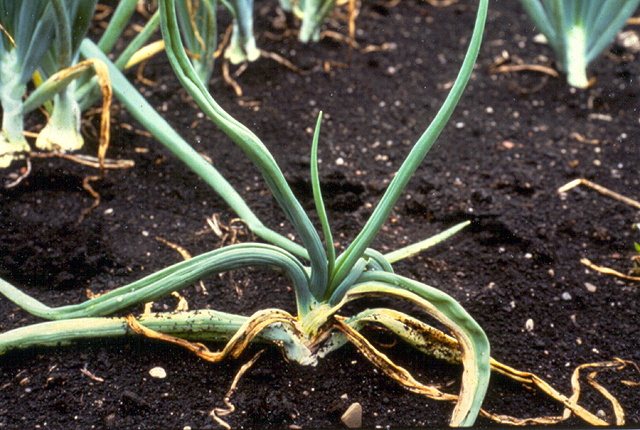
Aster yellows | Onion
DISEASE: Aster yellows
HOST: Onion (Allium cepa)
PATHOGEN: 'Candidatus Phytoplasma asteris'
PATHOGEN SYNONYM: Phytoplasma Aster yellows group
SOURCE: R. Rowe
DISEASE: Aster yellows
HOST: Onion
Onion flower with unusual symptoms (left) compared with healthy inflorescence (right). Flowers are distorted and often have abnormally long pedicels. Young leaves may have yellow streaks or a general yellowing of basal portions.
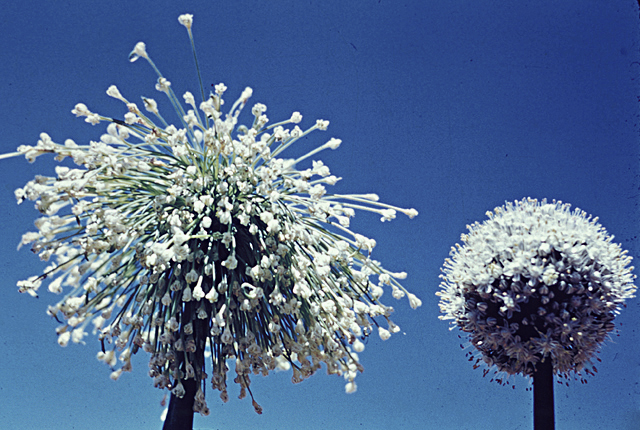
Aster yellows | Onion
DISEASE: Aster yellows
HOST: Onion (Allium cepa)
PATHOGEN: 'Candidatus Phytoplasma asteris'
PATHOGEN SYNONYM: Phytoplasma Aster yellows group
SOURCE: R. Raabe
DISEASE: Bacterial blast and black pit
HOST: Citrus (Lemon)
The term "black pit" refers to black lesions on fruit, which may be specks or large, sunken pits as seen here. They also may be light tan, later becoming reddish brown to black.
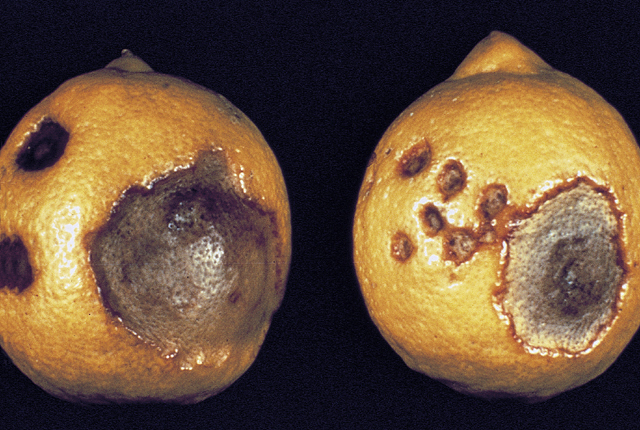
Bacterial blast and black pit | Citrus (Lemon)
DISEASE: Bacterial blast and black pit
HOST: Citrus (Lemon) (Citrus limon)
PATHOGEN: Pseudomonas syringae pv. syringae
SOURCE: J. Menge


